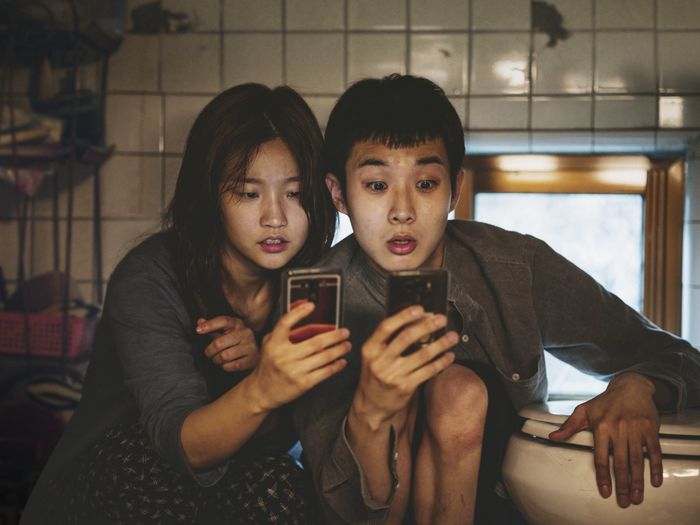1917: War is still a man’s, man’s world
Despite its captivating visual style, Sam Mendes’ WWI action drama is an unconvincing and predictable fantasy about stereotypical manhood, says Laura Lenkiewicz
1917 is a story about an idealised hero in the black and white world. Deeply rooted in the myth of individualism, Sam Mendes’ new feature makes the viewer believe that a man can achieve anything alone. Here, the war is seen from a unilateral perspective, thereby depriving Mendes’ work of the complexity that can be seen in Nolan’s Dunkirk. But my main problem with 1917 is that it portrays warfare as a piece of art rather than an act of unjustifiable human barbarity.
“I don’t think that an empty aestheticization of violence serves any good”
Mendes’ film follows the lives of two war heroes: Lance Corporal William Schofield (George MacKay) and Lance Corporal Tom Blake (Dean-Charles Chapman). They are given an order to deliver a secret message to another unit of the British army to prevent them from falling into a trap devised by their enemies. On their way, Tom dies and from then on, William has to complete the mission alone.
Although I won’t try to deny the visual mastery of the picture, and I firmly believe that it deserves its three Academy Awards for Best Cinematography (the cinematographer, Roger Deakins, triumphs for the second time after 13 fruitless nominations!), Visual Effects, and Sound Mixing, I don’t think that an empty aestheticisation of violence serves any good. 1917 follows a similar pattern of many war films and reveals a dangerous tendency to romanticise war and cruelty. In one of the most evocative scenes, the main character, having narrowly avoided death, is carried by the current of the river, surrounded by flower petals randomly floating on the water surface. The whole scene, which presumably was meant to emphasize the heroism of his mission, ends up being nothing more than heroic bombast.
The director is unable to decide what he wants to do. On the one hand, he uses close-ups to show the dismembered bodies of the wounded soldiers, their limbs mangled by missiles, and pieces of flesh hanging from their mutilated body parts. On the other, he insists on confronting the viewer with a series of over-aestheticized scenes, similar to the one with flower petals or with the sun beautifully setting over the battlefield, illuminated by the flares, which contribute nothing to the plot. This lack of visual coherence blurs the ideological message of the film. Supposedly, these romanticised and aesthetically perfect images of war are meant to shock the viewers. I cannot, however, resist the feeling that it is art for art’s sake and the shock factor is used only for the sake of shocking.
"1917 is a shameless celebration of masculinity in the times when many men feel that their virility is endangered"
What infuriated me even more is how 1917 depicts female characters. There’s an episodic role for a woman whom William encounters accidentally (somewhere between killing the enemy with his bare hands and jumping between the bullets). The woman is French, so she doesn’t understand a single world William says, but, miraculously, they manage to communicate. She, as the stereotypical epitome of goodness and innocence, takes care of the abandoned child whose mother has probably died during the war. At the same time, William, replicating the pattern of a flawless war hero, gives them all the food he has and even leaves some milk for the baby! It wouldn’t be as frustrating as it is if the scriptwriters had decided not to include any female characters at all; understandably, there weren’t many women in the epicentre of the battle. But the filmmakers decided to depict the female character in the most stereotypical way imaginable. This woman is helpless, abandoned, and all of a sudden, a man appears to save her and the baby for whom she cares. 1917 is a shameless celebration of masculinity in the times when many men feel that their virility is endangered. Mendes’ film reminds such men that there’s nothing to worry about, as their position is still stable.
There is a glaring imbalance between the visual aspect of the film and its screenplay. Despite its undeniable aesthetic mastery, 1917 is a lifeless, manichaean celebration of a stereotypical manhood that deprives the main characters of any psychological depth, as if being war heroes were the epitome of manhood. I have always disagreed with the idea that the aesthetics of a piece of art should be of greater importance than its meaning. The visual mastery of Mendes’ feature shouldn’t be considered as an ample justification of its archaic and pompous message. Sadly, 1917 cannot offer much more than a sheer triumph of form over content.
 News / CUP announces funding scheme for under-represented academics19 December 2025
News / CUP announces funding scheme for under-represented academics19 December 2025 News / Cambridge welcomes UK rejoining the Erasmus scheme20 December 2025
News / Cambridge welcomes UK rejoining the Erasmus scheme20 December 2025 News / SU reluctantly registers controversial women’s soc18 December 2025
News / SU reluctantly registers controversial women’s soc18 December 2025 Film & TV / Timothée Chalamet and the era-fication of film marketing21 December 2025
Film & TV / Timothée Chalamet and the era-fication of film marketing21 December 2025 News / News in Brief: humanoid chatbots, holiday specials, and harmonious scholarships21 December 2025
News / News in Brief: humanoid chatbots, holiday specials, and harmonious scholarships21 December 2025









